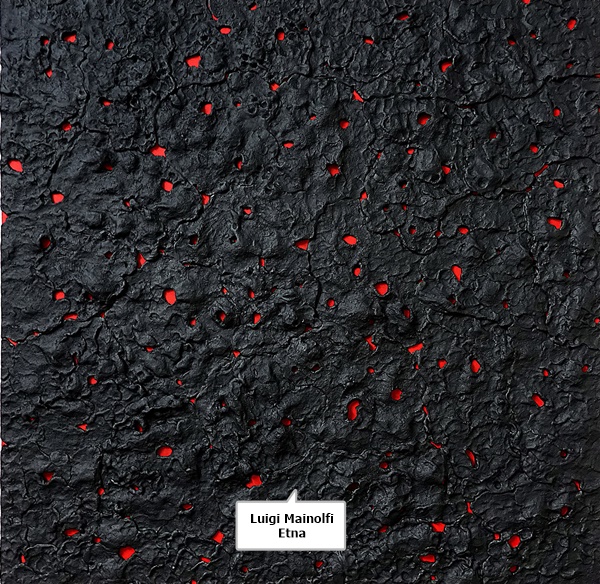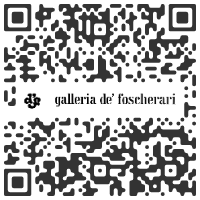Luigi Mainolfi

Galleria de'Foscherari
Via Castiglione 2B - 40124 Bologna, ITALYtel.fax: +39. 051. 221308 e-mail:


26 MARCH > 30 JUNE, 2022

The research of Luigi Mainolfi, for over four decades, traces a path by outlining a reflection on the foundations and complexities of sculptural practice, on its deep implications and its urgency. Urgency that manifests itself without the need for disciplinary rigidity or austere postures: sculpture, for the artist, is not so much a territory markedly delimited by impassable borders, whether technical or conceptual, but rather a field open to the possible, to multiple concrete directions. and symbolic that only an almost symbiotic relationship with some materials, and perhaps with the material itself, can reveal.
A trajectory, that of Mainolfi, clearly highlighted by the works presented in this solo show at the Galleria De 'Foscherari, starting from the one that gives the exhibition its title. Etna - a terracotta polyptych made last year - is the most recent piece of a research on the theme of the landscape that has been going on for several years now, always in progress and never really completed. Reflecting on the landscape, for the artist, has little to do with stylistic or thematic issues and is crucial, instead, for at least two other reasons. The first - and perhaps the most important - consists in the intention to consider nature not as a mere object of our gaze or our actions, but as a vital organism. For Mainolfi, sculpture must "live", or rather, it must bring to light the strength and intrinsic qualities of the material from which, all of a sudden, the work emerges with completeness. Work which, at the same time, is a synthesis and testimony of this vivification process. Consequently, the reference to a specific landscape such as that of Etna becomes almost a visual pretext: it represents nothing but the relentless intertwining of primordial forces, symbolically embodied both by the artistic practice itself, and by the iconic motif of fire and of the volcanic earth that generates life.
A second reason for the artist's interest in landscapes is given by the possibility of creating strongly "pictorial" sculptures. Etna is a very effective example, with its structure that clearly evokes that of the painting, first of all in the composition of patterns - of that red by now characteristic of the artist's work - scattered on the surface also vertically. However, it is not a question of thinking of sculpture as if it were painting or vice versa. The intention at the root of the work is much more complex and aims at a substantial hybridization of these two worlds, all enclosed in a paradoxical formula, but full of meaning, which Mainolfi usually uses in this regard: "Form of painting, color of sculpture". Therefore, the molded matter, pulsating in itself, is translated into an image as a magmatic surface that invites us to take a closer look. The enlargement of a fragment of nature calls us to itself, just as the photographer Thomas in Blow-Up Michelangelo Antonioni tends to approximate the image by increasing its size. However, if, within this image, the protagonist of the film looks for what escapes reality, a decisive detail, a close look at those of Mainolfi instead shows us a world in being, the combinatorial game between the artist's work and quality. vital parts of matter.
In this sense, the importance of the use of terracotta for the artist is confirmed in two other works on display. The objects arranged in the window, small in size and rounded and oblong shapes, seem to be part of a singular plant universe. However, it is difficult to define them as mere objects: on the surface of some the artist has left signs of small doors and small windows, indicating the possibility of hypothetical living agglomerations, of metaphorical cities that have sprung from terracotta. The testimony of both a concrete and symbolic life of sculpture is central in the Spheres, a series carried on for several years. Arranged like a "firmament", the artist would say, in the exhibition space, these elements draw a new topography establishing, for the viewer, further relationships with the environment in which he is immersed. Furthermore, the sphere takes on a nuance of meaning that is very important for Mainolfi's research: that of an ideal figure who represents the harmonization of the relationship between art, nature and life. The image of a perfection possible and attainable by every living body.
Art, then, is a gateway for the imaginative creation of worlds and, thus, also of hypothetical inhabitants. Like Apesse, a figure of the immense bestiary created over the years by the artist: a bronze sculpture with shapes that are both rigid and sinuous, a vaguely elephant-like hybrid with an uncertain physiognomy. It could be called a figurative sculpture, but it is wrong to reduce it to a merely descriptive connotation. Perhaps, thinking of Deleuze, it is worthwhile to use the term "figural" to indicate the living forms of this image that seems unstable, although firmly planted on the ground, and, potentially, capable of giving the sensation of changing and converging towards that perfect sphericity in which, says the artist, everything is transformed.
Enrico Camprini
A trajectory, that of Mainolfi, clearly highlighted by the works presented in this solo show at the Galleria De 'Foscherari, starting from the one that gives the exhibition its title. Etna - a terracotta polyptych made last year - is the most recent piece of a research on the theme of the landscape that has been going on for several years now, always in progress and never really completed. Reflecting on the landscape, for the artist, has little to do with stylistic or thematic issues and is crucial, instead, for at least two other reasons. The first - and perhaps the most important - consists in the intention to consider nature not as a mere object of our gaze or our actions, but as a vital organism. For Mainolfi, sculpture must "live", or rather, it must bring to light the strength and intrinsic qualities of the material from which, all of a sudden, the work emerges with completeness. Work which, at the same time, is a synthesis and testimony of this vivification process. Consequently, the reference to a specific landscape such as that of Etna becomes almost a visual pretext: it represents nothing but the relentless intertwining of primordial forces, symbolically embodied both by the artistic practice itself, and by the iconic motif of fire and of the volcanic earth that generates life.
A second reason for the artist's interest in landscapes is given by the possibility of creating strongly "pictorial" sculptures. Etna is a very effective example, with its structure that clearly evokes that of the painting, first of all in the composition of patterns - of that red by now characteristic of the artist's work - scattered on the surface also vertically. However, it is not a question of thinking of sculpture as if it were painting or vice versa. The intention at the root of the work is much more complex and aims at a substantial hybridization of these two worlds, all enclosed in a paradoxical formula, but full of meaning, which Mainolfi usually uses in this regard: "Form of painting, color of sculpture". Therefore, the molded matter, pulsating in itself, is translated into an image as a magmatic surface that invites us to take a closer look. The enlargement of a fragment of nature calls us to itself, just as the photographer Thomas in Blow-Up Michelangelo Antonioni tends to approximate the image by increasing its size. However, if, within this image, the protagonist of the film looks for what escapes reality, a decisive detail, a close look at those of Mainolfi instead shows us a world in being, the combinatorial game between the artist's work and quality. vital parts of matter.
In this sense, the importance of the use of terracotta for the artist is confirmed in two other works on display. The objects arranged in the window, small in size and rounded and oblong shapes, seem to be part of a singular plant universe. However, it is difficult to define them as mere objects: on the surface of some the artist has left signs of small doors and small windows, indicating the possibility of hypothetical living agglomerations, of metaphorical cities that have sprung from terracotta. The testimony of both a concrete and symbolic life of sculpture is central in the Spheres, a series carried on for several years. Arranged like a "firmament", the artist would say, in the exhibition space, these elements draw a new topography establishing, for the viewer, further relationships with the environment in which he is immersed. Furthermore, the sphere takes on a nuance of meaning that is very important for Mainolfi's research: that of an ideal figure who represents the harmonization of the relationship between art, nature and life. The image of a perfection possible and attainable by every living body.
Art, then, is a gateway for the imaginative creation of worlds and, thus, also of hypothetical inhabitants. Like Apesse, a figure of the immense bestiary created over the years by the artist: a bronze sculpture with shapes that are both rigid and sinuous, a vaguely elephant-like hybrid with an uncertain physiognomy. It could be called a figurative sculpture, but it is wrong to reduce it to a merely descriptive connotation. Perhaps, thinking of Deleuze, it is worthwhile to use the term "figural" to indicate the living forms of this image that seems unstable, although firmly planted on the ground, and, potentially, capable of giving the sensation of changing and converging towards that perfect sphericity in which, says the artist, everything is transformed.
Enrico Camprini
 | Luigi Mainolfi | |
Opening : SATURDAY 26 MARCH AT 4.00 PM
mpefm ITALY art press release
Gallery hours: Monday-Saturday 10:00 to 12:30 / 15:30 to 19:30
QR of this press release
in your phone, tablet








